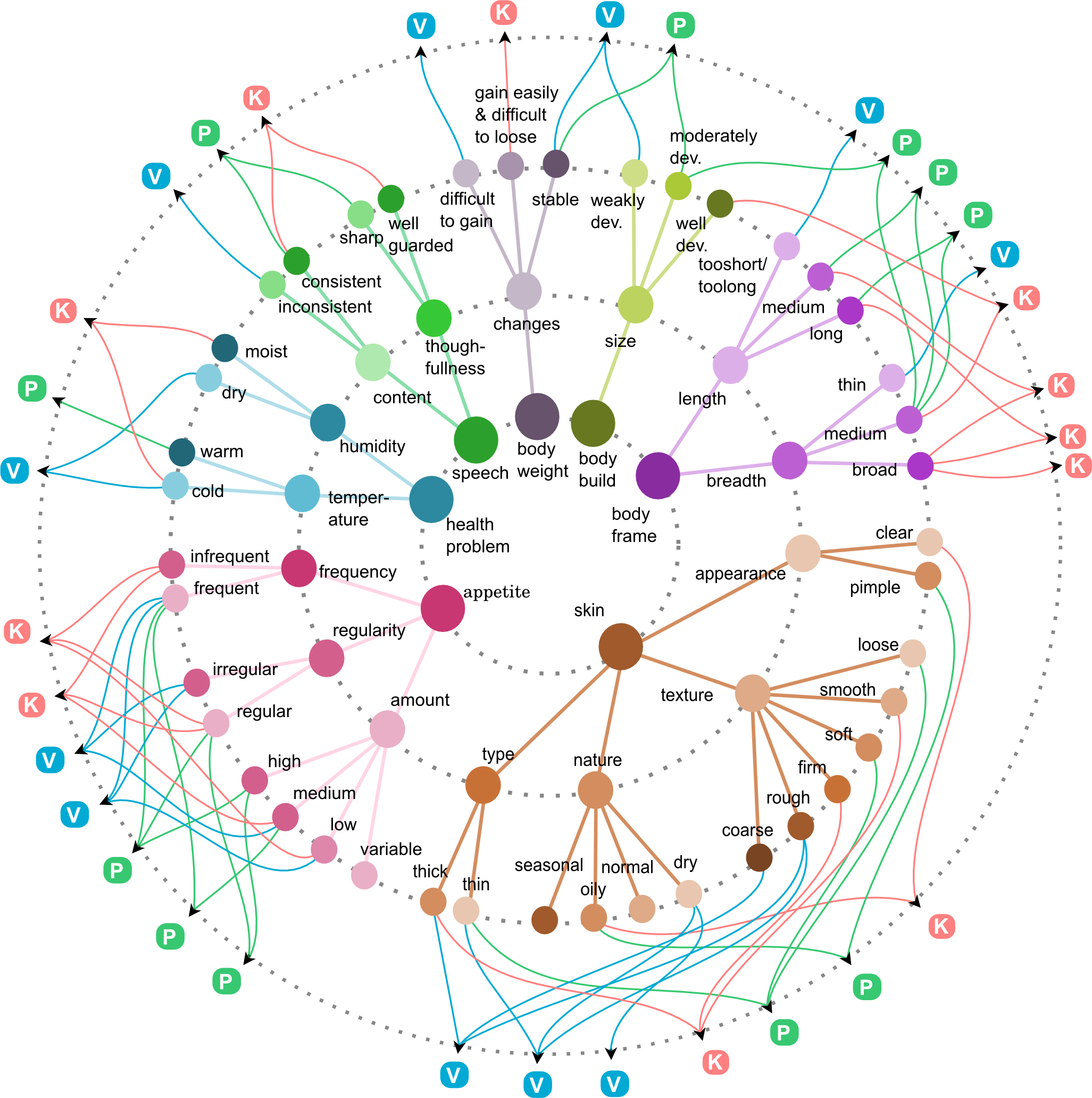Microbiome analysis of prakriti phenotype groups
Chauhan et al., 2018, “Western Indian Rural Gut Microbial Diversity in Extreme Prakriti Endo-Phenotypes Reveals Signature Microbes” Front. Microbiol., 13 February 2018
Summarized from DalMUG group discussion and written by: Dhwani Desai
Summary
There is a lot of physiological heterogeneity even in healthy individuals. The ancient Ayurveda system of Indian medicine has a protocol for classifying individuals into 3 major prakritis or physiological phenotype groups (See following note for details). This paper attempts to use 16S sequencing to establish gut microbial profiles corresponding to each of these prakriti types in a cohort of genetically homogenous individuals in a rural Indian community. They find Bacteroidetes and Firmicutes as the major varying groups across the prakriti groups. They confirmed some of the results using qPCR for certain prakriti specific genera/species including Prevotella, Roseburia hominis, Eubacterium rectale, Blautia torques, and Blautia obeum
Note on the inherent human physiological categorisations in Ayurveda philosophy:
Sankhya philosophy: Enumerates the 25 blocks/elements which make up everything/being
Purusha – eternal pure consciousness/higher Self
Prakriti – creative power/energy/Shakti
Within Prakriti – 3 gunas
Rajas – momentum/desire/creative
Sattva – balance/luminosity/knowledge/homeostasis
Tamas – Fermentation/Inertia/decay
3 elements of mind:
buddhi (sub-conscious) – higher/intuitive/self-knowing
manas – lower/rational – connects the world thru the 5 senses
ahamkara – ego
20 elements:
5 sense organs (jnanendriyas)
5 organs of action (karmendriyas) – speech, hands, legs reproductive organs, excretory organs
5 subtle senses – Form (Rupa), Sound (Shabda), Smell (Gandha), Taste (Rasa), Touch (Sparsha).
5 gross elements – Earth, water, fire, air, ether
Tridoshas
3 main constitution types made of a combination of the gross elements
Vata (V) – Air and ether; light, cool, dry, mobile
Pitta (P) – Fire (predominant) and water; hot, sharp, penetrating, volatile, oily
Kapha (K) – Water and earth; cool, moist, stable, heavy
Points of Interest
-
It was interesting to see that groupings of healthy individuals based on inherent physiological phenotyping would actually have differing gut microbiota
-
It was also interesting to note enrichment of specific microbes in the prakriti types which have been known in literature to be associated with various diseases, for example enrichment of Prevotella and P. copri in female Kapha individuals. These microbes have been found to compromise host health, and have been associated with rheumatoid arthritis (Juyal et al., 2012; Scher et al., 2013) and insulin resistance (Pedersen et al., 2016). And these phenotypes (associated with insulin resistance) such as obesity, susceptibility for type 2 diabetes and atherosclerosis have been previously described for Kapha Prakriti (Prasher et al., 2008; Govindaraj et al., 2015; Doddoli et al., 2016).
Points of Confusion
-
This dataset should have been analysed further in detail in terms of microbial metabolic functions and their correlation with the prakriti physiology.
-
Are Prakriti body types comparable with microbiome enterotypes from Peer Bork?
-
What can the microbiome tell us about the individual and his/her propensity for a disease that physiological and behavioural trait profiling cannot?
-
More microbiome-disease association studies should incorporate such inherent physiological/metadata profiling along with microbiome profiling

